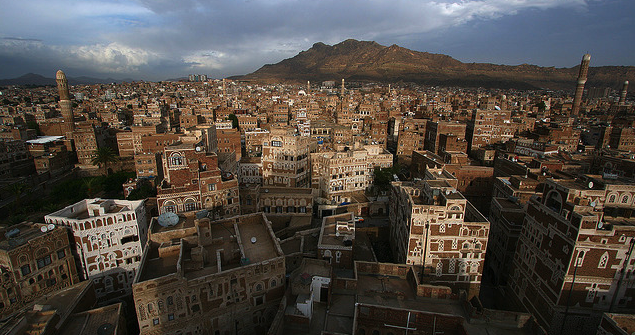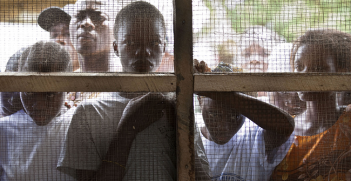Yemen: Sinking Under an Avalanche of Propaganda

In September 2014, US President Obama cited US policy towards Yemen as one of the successes of his Middle East policy.
Obama was referring to US drone attacks against suspected terrorists in Yemen, despite evidence that this was driving people into the arms of Al-Qaida in the Arabian Peninsula and other radical groups. The policy has culminated in attacks by Saudi Arabia and some Gulf allies on the Houthis, the tribal group that has overrun much of Yemen. Some policy. Some success. (Apologies to Winston Churchill.)
Yemen is perpetually unstable and on the edge of disaster – a result of an undeveloped economy, a history of outside interference, especially by Saudi Arabia and acute internal, largely tribal, divisions. The country’s problems have been dramatically aggravated by the Saudis’ assault which is of dubious legality and questionable military and political wisdom. The intervention contravenes significant elements of international law. The bombing of the capital, Sana’a, and other areas in which many non-combatants have been killed has violated human rights and humanitarian law. Importantly, the Saudis have violated fundamental tenets of the United Nations Charter, namely Article 2(4), which prohibits the use of force, and Article 2(7), which forbids outside intervention in the domestic affairs of states. These principles are at the heart of the international legal and political system.
After weeks of inaction, on 14 April the UN Security Council passed a resolution (UNSCR 2216) on the crisis. The Council’s action constitutes a cynical manipulation of international law by providing legal cover to the Saudis’ aggression. Instead of pursuing its responsibility to promote international peace and security by calling on all parties to cease and desist, Resolution 2216 targets the Houthis and ignores Saudi misdeeds. As such, the Council is complicit in the first example since Iraq’s invasion of Kuwait in 1990 of overt aggression, one of the crimes addressed by the International Criminal Court.
True, the Saudis were “invited” to intervene by the exiled government, which is ensconced in the Saudi capital and there are precedents for “intervention by invitation”. Such action must, however, comply with Article 51 of the Charter, which requires states involved in self-defence to refer the matter urgently to the Security Council. The Americans waited weeks before they would allow the matter to be dealt with by the Council.
The avalanche of propaganda from Washington and some Gulf capitals has clouded the issue and the reality that there were no Yemeni attacks on Saudi Arabia before the Saudi bombings began and there was no threat to international peace and security. Instead, we had a civil war in which the Houthis were seeking to change a flawed governance reform deal, the so-called Gulf Initiative imposed on Yemen in 2011 by Saudi Arabia and other Gulf states after the fall of President Ali Abdallah Saleh. The Houthis never intended to take over the whole country. They simply kept advancing south as the Yemeni army faded away before them.
Resolution 2216 acknowledges that Al-Qaeda in the Arabian Peninsula has been benefitting from the Saudi attacks. Indeed, the Saudis seem to be carefully avoiding Al-Qaeda targets in their bombings. Senior US military officers have described the Houthis as one of the few groups effectively challenging Al-Qaeda in the area.
The US officers also predicted that the Saudis would fail and their forecast appears likely to be validated. The Saudis have taken a great political and military risk in attacking Yemen. Since the beginning of their air campaign, Pakistan has refused to join them and Turkey has withdrawn its support. Egypt has set a high financial hurdle for its participation. Their bombing has not caused the Houthis to abandon their gains. Instead, their attacks are introducing sectarian divisions into the conflict. The result may be an even greater threat on the Saudis’ southern border.
Several factors drive Saudi actions. One is Saudi hatred of Shi’a Islam and another is their intent to lead the counter-revolution against the gains made in the 2011 Arab revolts in removing totalitarian governments.
Their treatment of their own Shiite population is dreadful and they have pursued a similar attitude across the region. In 2011 the Saudis intervened in Bahrain to crush the demands of the majority Shi’a population for representative and transparent government. The Gulf Initiative was intended to limit the role in Yemeni politics of the Houthis, who are Zaydi Shi’a.
Behind much of recent Saudi policy is paranoid fear of Iran. While UNSCR2216 was directed at the Houthis, Iran was also a target. Just as, during the Cold War, the United States chose to regard any nationalist movement as an agent of Moscow, so the Saudis see an Iranian plot in any attempt by Shi’a to improve their status. The Saudis fear Iran’s growing stature in the region and its understandings with the United States in fighting Islamic State in Iraq.
The American role in the crisis is deeply cynical. President Obama must overcome domestic opposition to the nuclear framework agreement between Iran and the five Security Council members plus Germany. Saudi Arabia had been one of the more strident opponents of any agreement but after the deal was announced and following a conversation between King Salman and Obama, the Saudi government gave cautious approval of the deal. In return for Arab endorsement of the Iran agreement, Obama has provided support for the Saudi attacks on Yemen.
Yemen desperately needs an end to the fighting and a negotiated settlement that takes account of the wishes of the Yemeni people. Their voice has been ignored so far and there is no sign that the Saudis or Americans are inclined to listen at the moment.
For the Saudis, the adventure has exposed their strategic weaknesses and demonstrated again that their great wealth alone is not sufficient for them to claim regional leadership.
Dr Anthony Billingsley is a Senior Lecturer of International Relations at the School of Social Sciences, Faculty of Arts and Social Sciences, UNSW. His main research focus is the Middle East and international law. This article can be republished with attribution under a Creative Commons Licence.





